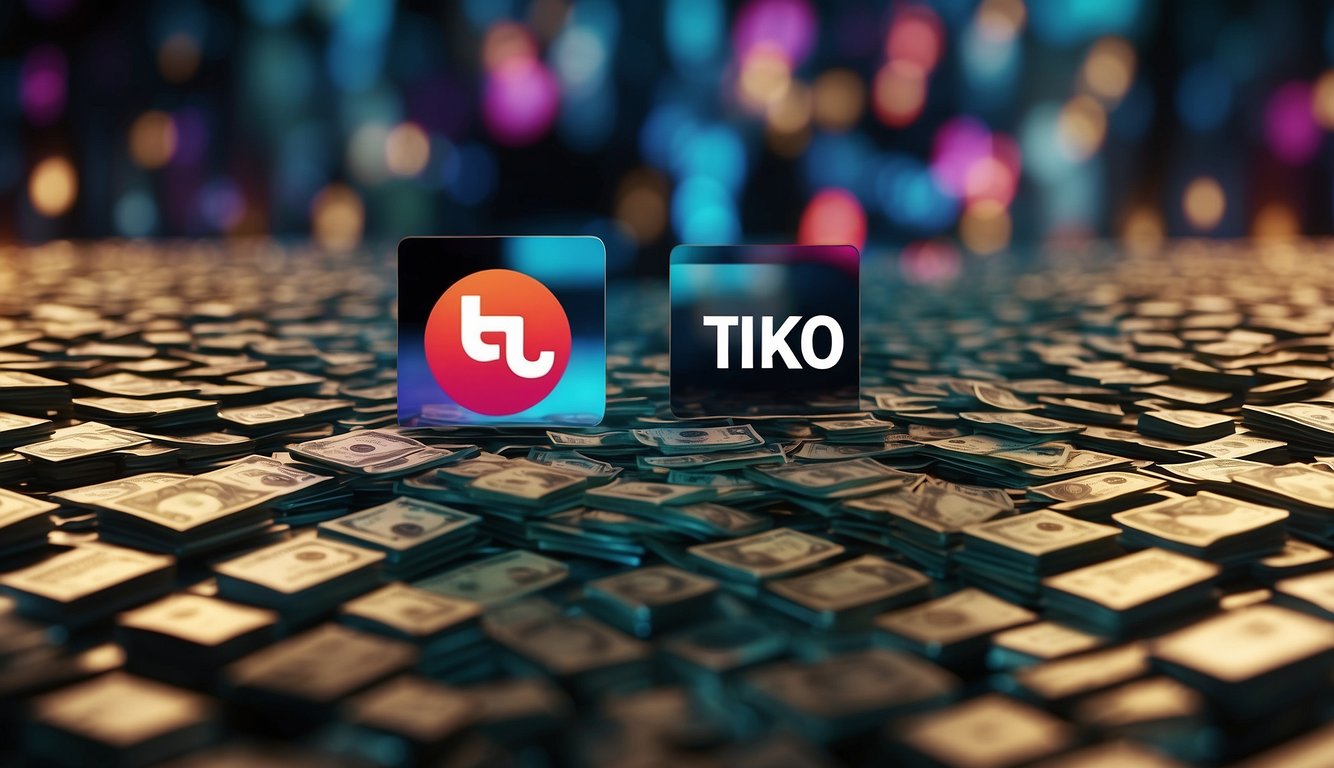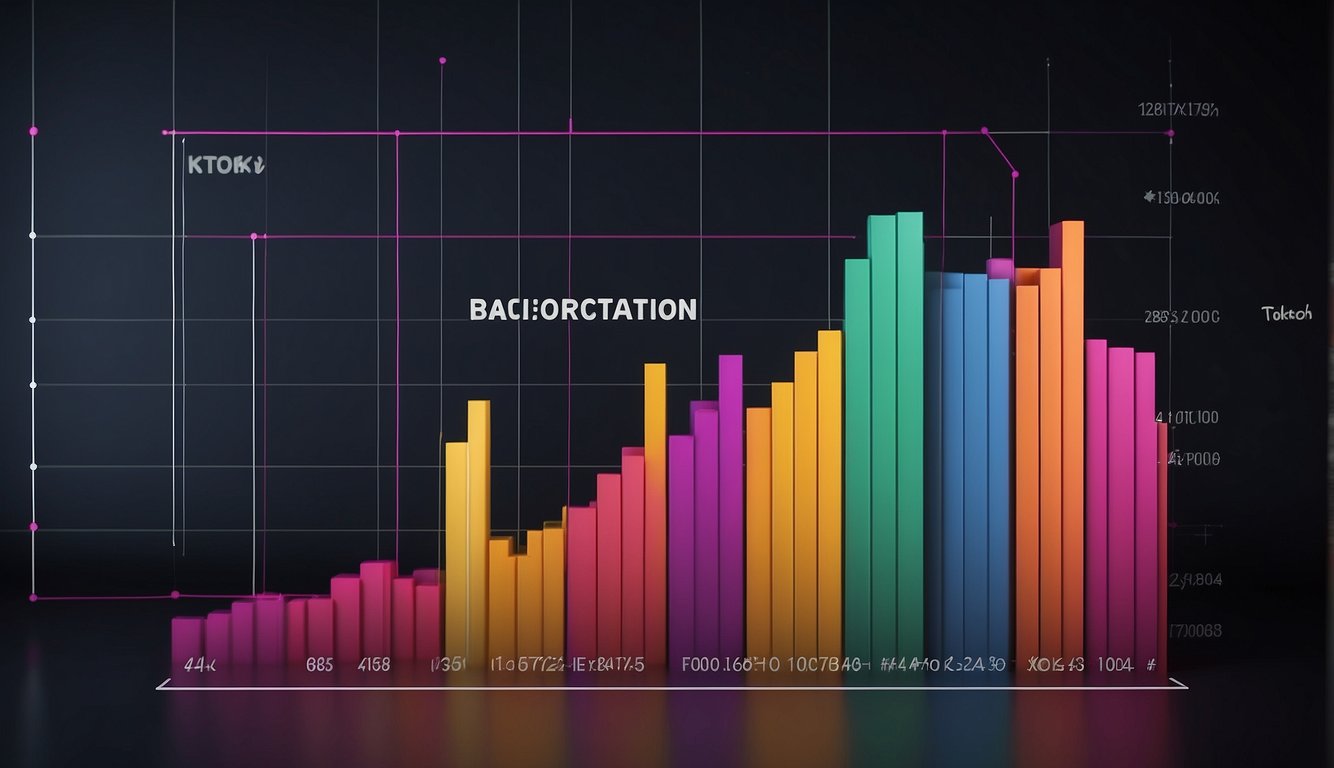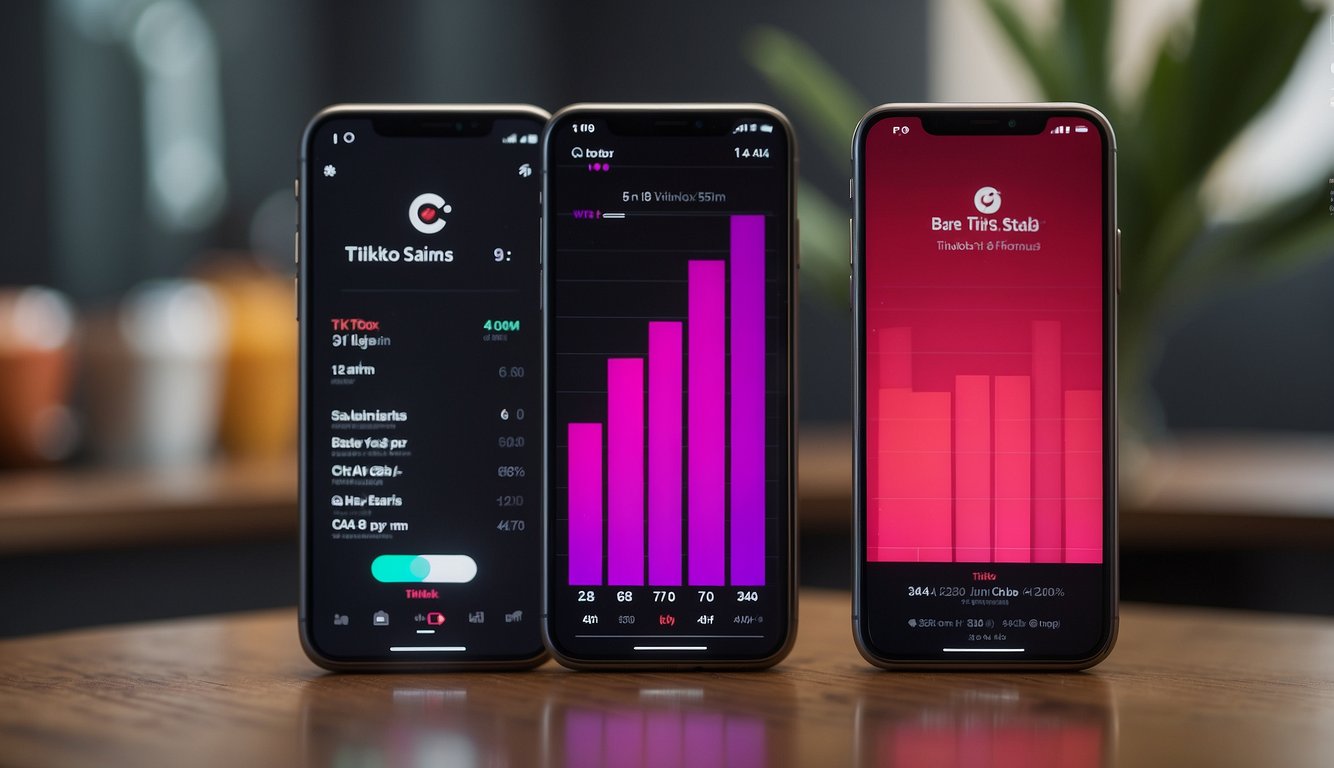If you are a content creator looking to monetize your videos, you might be studying TikTok vs YouTube earnings potential. While both platforms have millions of users and offer monetization opportunities, there are some key differences in their monetization models and earnings potential. In this article, we'll explore the similarities and differences between TikTok and YouTube earnings, so you can make an informed decision about which platform to use.

To understand TikTok and YouTube earnings, it's important to first understand the platforms themselves. TikTok is a short-form video app that allows users to create and share 15-second videos set to music. YouTube, on the other hand, is a video-sharing platform that allows users to upload and share longer videos on a variety of topics. While both platforms have a large user base and offer monetization opportunities, the way they approach content creation and engagement is quite different.
When it comes to monetization models, both TikTok and YouTube offer similar options, such as advertising revenue and brand partnerships. However, the way they calculate earnings and the amount of money you can earn vary greatly. In the next section, we'll dive deeper into the specifics of each platform's monetization model and compare their earnings potential.
Key Takeaways
- TikTok and YouTube offer similar monetization options, but their earnings potential and calculation methods differ.
- TikTok is best for short-form, engaging content, while YouTube is better suited for longer, educational or informative videos.
- To maximize your earnings on either platform, you'll need to focus on creating quality content, building engagement, and leveraging business and marketing strategies.
Understanding TikTok vs YouTube Earnings

Evolution of TikTok and YouTube
TikTok and YouTube are two of the most popular social media platforms in the world. TikTok was launched in 2016 by ByteDance, a Chinese company, and quickly became popular among Gen Z users. YouTube, on the other hand, was launched in 2005 and has grown to become the largest video-sharing platform in the world.
TikTok started as a short-form video platform where users could create and share 15-second videos with music and filters. Over time, it has evolved to include longer-form videos and a wide range of content categories. YouTube, on the other hand, has always been a long-form video platform where users can create and share videos of any length on any topic.
Key Features and Formats
TikTok's key features include its short-form video format, music integration, and algorithm-driven content discovery. It also offers a range of creative tools and filters that allow users to enhance their videos. YouTube, on the other hand, offers a range of video formats, including long-form videos, live streams, and shorts.
Both platforms offer monetization options for content creators. TikTok has a Creator Fund that pays eligible creators based on their video views, while YouTube offers monetization through advertising revenue, channel memberships, and merchandise sales.
User Demographics and Audience
TikTok has a predominantly young user base, with over 60% of its users under the age of 30. It is particularly popular in India and the United States. YouTube, on the other hand, has a more diverse user base, with users of all ages and from all over the world.
Both platforms have a large audience, with TikTok having over 1 billion active users and YouTube having over 2 billion active users. They also compete with other social media platforms such as Instagram and Facebook.
In conclusion, TikTok and YouTube are two of the most popular social media platforms in the world, each with its unique features and audience. While TikTok is known for its short-form video format and algorithm-driven content discovery, YouTube offers a range of video formats and monetization options for content creators.
Monetization Models

If you're considering becoming a content creator, it's important to understand the monetization models of the platforms you're considering. Here's a rundown of the monetization models for TikTok and YouTube.
TikTok's Creator Fund and Monetization Tools
TikTok offers several ways for creators to monetize their content. The TikTok Creator Fund is perhaps the most well-known monetization tool. This fund pays eligible creators for their content based on views and engagement. The exact amount paid out varies, but some creators have reported earning thousands of dollars per month from the Creator Fund.
In addition to the Creator Fund, TikTok also offers other monetization tools such as channel memberships, Super Chat, sponsorships, merchandise sales, and affiliate marketing. While these tools aren't as well-known as the Creator Fund, they can still be lucrative for creators who know how to use them.
YouTube's Partner Program and Revenue Streams
YouTube's monetization model is centered around the YouTube Partner Program (YPP). This program allows creators to monetize their content through advertising revenue. Once a creator meets the eligibility requirements, they can enable ads on their videos and earn a share of the revenue generated from those ads.
In addition to advertising revenue, YouTube also offers other revenue streams such as channel memberships, Super Chat, sponsorships, merchandise sales, and affiliate marketing. These revenue streams can be a great way for creators to supplement their income from advertising revenue.
Overall, both TikTok and YouTube offer a variety of monetization tools for creators. While the specifics of each platform's monetization model may differ, the goal is the same: to help creators earn a living doing what they love.
Earnings Potential Comparison

When it comes to earning potential, both TikTok and YouTube offer opportunities for creators to generate income. However, there are several factors that can affect how much money you can make on each platform.
Average Earnings for Creators
According to a MoneyTransfers.com article, the top three TikTok earners all joined the app in 2019, just before the app's growth exploded. In 2023, some of TikTok's top creators like Charli D'Amelio earned as much as $23 million. On the other hand, YouTube has a larger audience and more established creators, which means there is more competition for views and ad revenue. However, YouTube's ad revenue is generally higher than TikTok's, with some channels earning more than $10,000 a year from ad revenue alone, according to a TIME article.
Factors Affecting Income
Your earnings on TikTok and YouTube depend on several factors, including your engagement rate, the algorithm, and the income streams you use. On TikTok, the algorithm favors content that is engaging and has a high view count, which means that creators who can consistently create viral videos have a higher chance of making money. On YouTube, the algorithm favors watch time and audience retention, which means that creators who can keep their viewers engaged for longer periods of time have a higher chance of making money.
In terms of income streams, both TikTok and YouTube offer a variety of options for creators. On TikTok, creators can earn money through brand deals, live streaming, and the Creator Fund, which pays creators based on the views they generate. On YouTube, creators can earn money through ad revenue, brand deals, and merchandise sales. However, it's important to note that the CPM (cost per mille) on YouTube is generally higher than on TikTok, which means that creators can earn more money per thousand views on YouTube.
Overall, the earning potential on both TikTok and YouTube is significant, but it ultimately depends on your ability to create engaging content and build a loyal audience. By understanding the factors that affect your income and leveraging the income streams available to you, you can maximize your earnings potential on both platforms.
Content Creation and Engagement

Creating content that resonates with your audience is crucial for success on both TikTok and YouTube. However, the way content is discovered and consumed on these platforms is different. Understanding the role of algorithms in content reach and engagement metrics can help you tailor your content strategy accordingly.
Role of Algorithms in Content Reach
Both TikTok and YouTube use algorithms to determine which content to show to users. TikTok's algorithm is based on the user's past behavior, such as the videos they've liked, shared, or commented on. The algorithm then recommends content that is similar to what the user has engaged with in the past. On the other hand, YouTube's algorithm takes into account a variety of factors, including watch time, engagement, and relevancy to the user's search query.
As a content creator, it's important to understand the algorithm of each platform and create content that is optimized for it. For example, on TikTok, you should focus on creating short-form, attention-grabbing videos that have the potential to go viral. On YouTube, you should aim to create longer videos that keep viewers engaged for longer periods of time.
Engagement Metrics and Their Impact
Engagement metrics, such as likes, comments, and shares, are important indicators of how well your content is resonating with your audience. On TikTok, engagement is crucial for getting your content to go viral. The more engagement your video gets, the more likely it is to be recommended to other users. On YouTube, engagement is important for building a loyal audience and increasing watch time.
Analytics tools provided by both platforms can help you track your engagement metrics and adjust your content strategy accordingly. For example, on TikTok, you can see which videos are getting the most views, likes, and shares. On YouTube, you can track your watch time, audience retention, and subscriber growth.
In conclusion, creating engaging video content is key to success on both TikTok and YouTube. Understanding the role of algorithms in content reach and engagement metrics can help you tailor your content strategy to each platform. By optimizing your content for each platform and tracking your engagement metrics, you can increase your growth, brand awareness, and influence as a content creator.
Business and Marketing Strategies

When it comes to earning money on TikTok and YouTube, there are several business and marketing strategies that can be employed. In this section, we will explore some of the most effective strategies for maximizing your earnings on these platforms.
Advertising and Brand Partnerships
One of the most common ways to earn money on TikTok and YouTube is through advertising and brand partnerships. Both platforms offer a range of ad formats that can be used to reach your target audience and generate revenue. TikTok, for example, offers bumper ads, which are short, non-skippable ads that play before a user's chosen video. YouTube, on the other hand, offers a range of ad formats, including skippable and non-skippable ads, as well as sponsored content.
In addition to traditional advertising, brand partnerships can also be a lucrative way to earn money on these platforms. Brands are often looking for influencers to promote their products or services, and TikTok and YouTube are both great platforms for reaching a large audience. By partnering with a brand, you can earn money through sponsored content, which typically involves creating a video that promotes the brand's product or service.
Innovative Marketing Opportunities
In addition to traditional advertising and brand partnerships, there are also a range of innovative marketing opportunities available on TikTok and YouTube. For example, branded hashtags can be a great way to generate buzz around a product or service. By creating a hashtag that is unique to your brand, you can encourage users to create and share content related to your brand.
Another innovative marketing opportunity on TikTok is the use of user-generated content. By creating a challenge or contest that encourages users to create and share their own content, you can generate buzz around your brand and increase engagement with your audience.
Budget
When it comes to earning money on TikTok and YouTube, it's important to have a clear budget in mind. While both platforms offer a range of advertising and marketing opportunities, some of these options can be quite expensive. It's important to carefully consider your budget and choose the options that will provide the best return on investment.
Video Streaming
Finally, it's worth noting that both TikTok and YouTube are primarily video streaming platforms. This means that video marketers need to have a strong understanding of the platform and how to create engaging video content that will resonate with their audience. By focusing on creating high-quality video content, you can increase engagement with your audience and maximize your earnings on these platforms.
In conclusion, there are a range of business and marketing strategies that can be employed to maximize your earnings on TikTok and YouTube. By carefully considering your budget and choosing the options that will provide the best return on investment, you can generate significant revenue on these platforms.
Challenges and Considerations

Content Demonetization Issues
One of the biggest challenges for content creators on both TikTok and YouTube is the issue of demonetization. Both platforms have strict policies on what type of content is suitable for monetization, and creators who violate these policies risk losing their ad revenue. This can be a major setback for creators who rely on ad revenue as their primary source of income.
On TikTok, some creators have reported issues with their content being flagged as "not suitable for all advertisers," even if the content is not explicitly controversial or offensive. This can lead to a significant reduction in ad revenue, and can make it difficult for creators to continue producing content on the platform.
Similarly, YouTube has faced criticism for its demonetization policies, with some creators claiming that their content has been unfairly flagged as unsuitable for advertisers. This has led to frustration and disillusionment among some creators, who feel that the platform is not doing enough to support them.
Platform Competition and Market Trends
Another consideration for content creators on both TikTok and YouTube is the competitive landscape of the short-form video market. With the rise of Instagram Reels and TikTok Pulse, there are now more platforms than ever for creators to choose from, and competition for views and engagement is fierce.
This can make it difficult for creators to stand out from the crowd and build a loyal following, particularly if they are new to the platform. It also means that creators need to be constantly adapting and evolving their content to keep up with changing market trends and audience preferences.
At the same time, the popularity of short-form content shows no signs of slowing down, and there are plenty of opportunities for creators who are able to produce entertaining and engaging content that resonates with their audience. By staying up-to-date with the latest trends and focusing on creating high-quality content, creators can build a successful career on either TikTok or YouTube.
Overall, there are both challenges and opportunities for content creators on both TikTok and YouTube. By understanding the differences between the two platforms and staying on top of market trends, creators can build a successful career in the fast-paced world of short-form video content.
The Future of Video Content Platforms

As we move forward into the future, it's clear that short-form video content is here to stay. Platforms like TikTok and YouTube have revolutionized the way we consume video content, and emerging trends suggest that this is only the beginning.
Emerging Trends in Short-Form Content
One of the most significant trends in short-form content is the increasing use of AI to personalize video content. This technology can analyze users' behavior and preferences to suggest videos that are most likely to be of interest to them. This is already happening on platforms like TikTok, where the "For You" page uses AI algorithms to curate content for each user.
Another trend is the increasing popularity of short-form video content among older demographics, including baby boomers. According to a recent study, nearly 20% of TikTok users in the US are over the age of 35. This suggests that short-form video content is not just for millennials and Gen Z, but is becoming more mainstream across all age groups.
Predictions for Platform Growth and Changes
Looking ahead, it's clear that short-form video content will continue to grow in popularity. In particular, emerging markets like Indonesia are expected to be a significant source of growth for platforms like TikTok and YouTube. With a rapidly expanding middle class and a young, tech-savvy population, Indonesia is poised to become one of the largest markets for short-form video content in the world.
Another prediction is that we will see more features and tools that allow creators to monetize their content. Both TikTok and YouTube have already introduced features like Creator Funds and Super Chat, which allow creators to earn money directly from their fans. As these platforms continue to grow, we can expect to see more ways for creators to earn a living from their content.
In conclusion, the future of short-form video content is bright, and platforms like TikTok and YouTube are leading the way. With the increasing use of AI and the growing popularity of short-form content among older demographics, we can expect to see these platforms continue to grow and evolve in the coming years. As a creator or a consumer of video content, you can look forward to an exciting future filled with new features, tools, and trends.



























